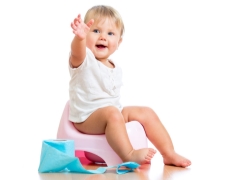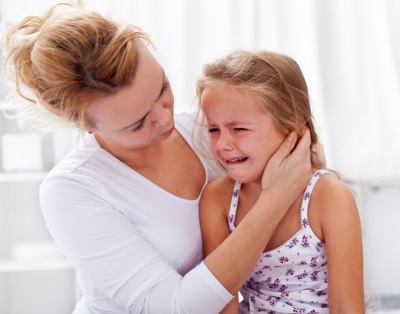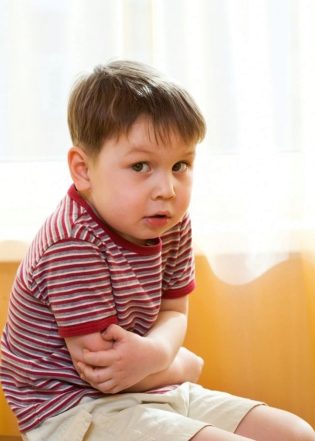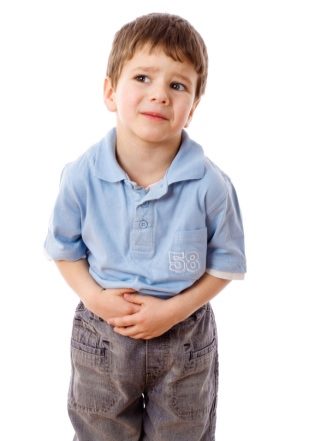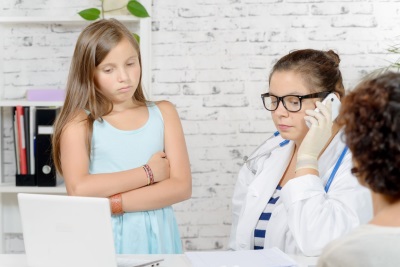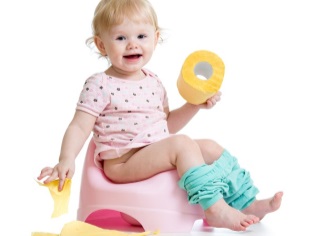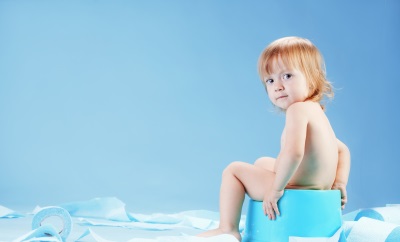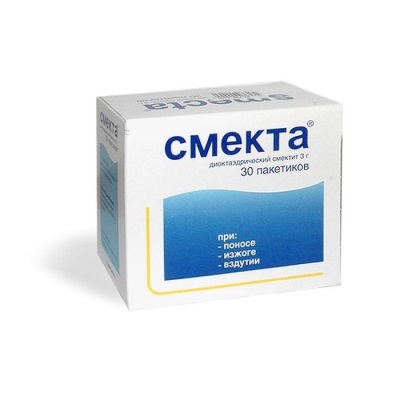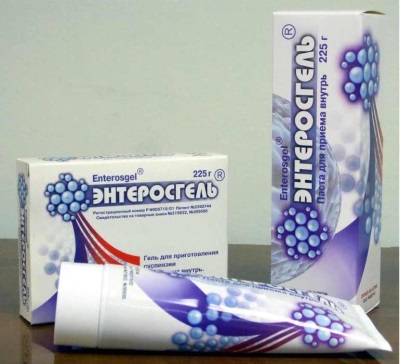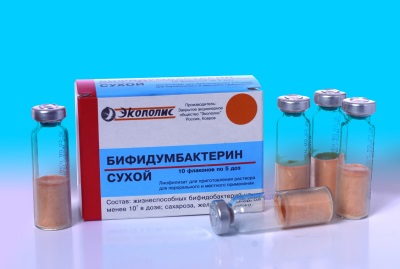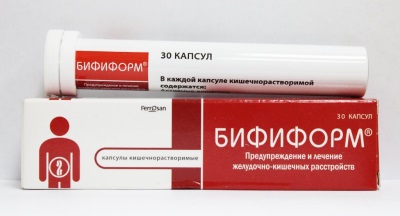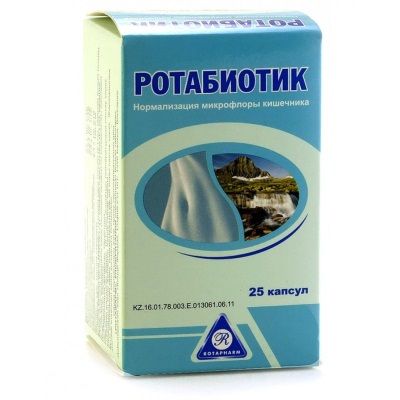Diarrhea in a child after taking antibiotics
The course of antibiotic treatment is passed. The doctor is satisfied that the baby is healthy. But the sense of well-being of the crumbs is far from ideal - his intestines “blow”, gases go away, his stomach hurts, he is tormented by bouts of vomiting and diarrhea. Why this happens and what to do, as a rule, know all the parents with great experience. But the newly-made moms and dads are at a loss.
The answer lies in understanding the principle of the effects of antibiotics on the body.
These drugs do an excellent job with pathogenic bacteria and microbes, but at the same time affect the beneficial microflora. Therefore, the balance in the child’s body is disturbed. Unpleasant processes that cause discomfort are called dysbiosis.
You can find out about dysbacteriosis in the video of Dr. Komarovsky:
Diarrhea and vomiting after taking antibiotics is a rather dangerous condition, especially for a very young child. When the liquid stool from the body, already weakened by the previous disease and treatment, enormous amounts of useful substances, vitamins, trace elements and water are removed with incredible speed. There is dehydration, the salt balance is disturbed. The kid certainly needs our adult help if something like this happens to him.
After taking antibiotics, diarrhea and vomiting can be caused by several reasons:
- Dysbacteriosis. In the intestines of the baby "killed" most of the beneficial microorganisms that are responsible for normal digestion and stool. Such a disorder in the presence of antibiotics is most common.
- Impaired gastrointestinal motility. Antibiotics are quite strong effect on the muscular layer of the esophagus. As a result, the ability to properly digest and absorb nutrients is impaired. This is medicinal "indigestion" stomach has a direct effect on the chair.
- Allergic reaction of the child to antibiotics. In the instructions for use of most modern antibiotics as a side effect are indicated disorders of the functions of the gastrointestinal tract and allergic reactions. In this case, the child is unlikely to have only diarrhea. If you are allergic to the drug, he is very likely to develop a rash, vomiting.
What antibiotics most often cause diarrhea and allergies?
Troubles with stools and digestion are most often expected from tetracycline antibiotics (“Doxycycline"," Tetracycline "," Metatsiklin "and others.).
The taking of antibiotics of the “Fluoroquinolone” family can turn into a real catastrophe for a child’s body. These are the most toxic antibiotics, and the whole range of drugs is strictly prohibited for children.
Antibiotics of the penicillin group ("Amoxicillin"," Flemoksin ","Amoxiclav"," Flemoklav ", and so on) quite often cause diarrhea. Allergies are even more common in children. The least harmful to the body is caused by antibiotics - macrolides ("Azithromycin», «Sumamed"," Erythromycin ","Clarithromycin»).
When do side effects begin to occur?
As a rule, problems with a child’s stool begin even during a course of antibiotic treatment. But in some cases, after the end of taking antibacterial drugs before diarrhea can occur, it may take several days.
You need to pay attention to several important symptoms:
- Pallor of the skin of the child
- Bloating
- Complaints of abdominal or stomach pain
- Lack of appetite
- Drowsiness, lethargy
- Loose stools
- It is possible (but not necessary!) An increase in body temperature to 37-37.5 degrees.
Features of defecation in children
The liquid stool itself does not always speak about the ill health of children. For example, in babies up to a year, a watery stool is a variant of the norm. Here it is important to pay attention to the number of bowel movements per day. A healthy child between the ages of 0 and 1 month can get up to 10 times a day. A baby from 1 to 3 months goes to the toilet from 2 to 6 times a day. At 6 months, the baby empty the intestines 1-2 times a day. If the diet of the baby already has a thick food, the feces will also be more dense. A one-year-old child may already be able to manage with one large-scale hike a day.
Carefully consider the color of the contents of the diapers or the pot. In crumbs up to 6 months, feces may be yellow, greenish. In older children, it is slightly darker.
If the stool on the background of taking antibiotics has become frequent (in excess of the specified norms), the smell is sour and unpleasant, the color has changed, this is a reason to consult a doctor.
Yes, diarrhea is not an independent disease, it is only a symptom of various disorders, but it can cause great harm to the baby, and therefore it is better to consult a specialist and calmly proceed with treatment.
Treatment of diarrhea and vomiting after taking antibiotics
To treat diarrhea and vomiting that happened to the baby after taking antibiotics, you need to gradually. Every action must be consistent.
Restoration of water-salt balance in the body
With diarrhea or vomiting, the baby has already lost a certain amount of fluid, and therefore he will need plenty of drink. Do not give carbonated water, store juices, milk. The child should drink tea, can be herbal with chamomile or sage, compote of dried fruit, jelly, and more simple drinking water. Rehydration solutions are very helpful, they can be inexpensively purchased at any pharmacy:
«Regidron"- the powder from which the solution is made to drink. It not only restores the balance of fluids and salts in the body, but also promotes detoxification, i.e. removes accumulated toxins. 1 bag must be dissolved in a liter of cooled boiled water. Give the child a solution from the very beginning of diarrhea. Ends with the end of diarrhea. If the child vomits, the solution of “Regidron” is given in small doses, often in a cool form. Store diluted composition can be in the refrigerator only for a day and no more.
"Humana Electrolyte" is a mixture from which solutions are made. Kids up to 3 years old - with fennel. For children who have already turned 3 years old and older - with a banana. A bag of the mixture must be diluted 250 mg. water. You can take the solution as warm or cold. Children under one year should be given 50-100 ml of Humana Electrolyte per 1 kg of baby weight per day. Children from 1 year to 3 years -100-150 ml of the drug per 1 kg of body weight of the child. Children from 3 years old - 150 ml of the drug per 1 cell mass per day. Divide the total amount of the solution into 6-8 doses. It tastes quite pleasant, therefore difficulties during its reception should not arise.
Thickening of feces
This is the main stage of treatment. It begins immediately after you begin to restore the water-salt balance in the body of the crumbs. The most popular and optimal antidiarrheal drugs for children - “Smecta"And"Enterosgel».
"Smekta" is a powder from which you can prepare a suspension with an orange or vanilla flavor at home. Babies who have not yet turned 1 year old should be given 2 bags of Smekta per day, after three days, reduce the dosage to 1 bag of medication. One-year-old children and older - 4 sachets of the drug per day for three days, and then reduce the dose to 2 sachets.
«Enterosgel"- this drug has not only antidiarrheal properties, but also is able to bind and excrete toxins from the body, it improves the activity of the intestines, liver, kidneys and strengthens the immune system." The drug is available in the form of a gel for the preparation of a solution and in the form of a thick white paste for oral administration. For babies up to one year, one teaspoon of Enterosgel is divided into 4 doses. Crowns under 2 years also divide 2 spoons of the drug into 4 doses. Children up to 7 years old give 1 teaspoon of pasta, but not more than 5 g. For schoolchildren from 7 to 14 years old - 2 dessert spoons, not more than 10 g.
When taking these drugs, it should be remembered that non-compliance with the dosage can not only cure diarrhea, but also lead to constipation. In addition, drugs should not be given for bleeding from the anus, in the acute stage of gastric ulcer.
Normalization of microflora
This is the third, and perhaps the longest stage of the treatment of diarrhea after taking antibiotics. With the help of special preparations, new tenants, useful and necessary bacteria, are artificially “populated” into the damaged intestines of a child. It is better to abandon the self-selection of such drugs, that the doctor should decide to give the child to restore order in the intestines. Usually, the following drugs are recommended for children:
«Bifidumbacterin"Is a probiotic rich in live and active bifidobacteria. You can buy it in the form of rectal suppositories, pills and dry weight. Babies from birth, add the drug in the milk mixture or drinking water and 1 sachet of dry weight 3 times a day. Children from 1 year to 3 years can be given 1 sachet 4 times a day. Children from 3 to 7 years old - the drug should be taken five times a day, 1 sachet. Older children- 2 packs 4 times a day.
«Bifiform"- is a probiotic with a high content of bifidobacteria, lactobacilli and vitamins of group B. Available in the form of sachets, chewable tablets, oil solution, as well as in capsules and tablets. Bags are mixed with food and water, chewable tablets can be given to the child as a candy, they have a pleasant taste. A suspension is prepared from the oil solution. The dosage and duration of treatment is determined by the doctor.
“Hilak Forte” are oral drops containing the substrates of metabolic products. The child should take them before meals or during meals. Drops dissolved in drinking, in a small amount of liquid. No need to add them to milk! "Hilak Forte" should not be given to babies, the drug is intended for children who have reached the age of 2 years. Single dose - from 20 to 40 drops.
"Rotabiotik" - this drug not only restores the intestinal microflora, but also has a positive effect on the processes of digestion of food and absorption of useful substances. Available in capsules. Children from 1 to 3 years old can take 1 capsule twice a day. The children from 3 to 12 years, too, for 1 capsule, but already three times a day.
The course of recovery of intestinal microflora can sometimes take several months.
It should be remembered that the treatment of diarrhea will require special diets. Raw vegetables and sour fruits, especially citrus fruits, fried and salty, fatty meats should be excluded from the child’s diet. Very carefully should be given fermented milk products and milk, and even then only after the acute stage of diarrhea and vomiting will be left behind. It is better for babies who are “artificials” to dilute the ready-made adapted mixture by half in the first three days after the onset of diarrhea or vomiting. When the diarrhea stops, you can return to the usual proportions of the mixture and water.
In order to prevent severe dysbiosis, doctors always recommend simultaneously with taking antibiotics to start taking probiotics. Even if an undesirable reaction does occur, it will be easy and short.
About rehabilitation after antibiotics is perfectly told by Dr. Komarovsky:
